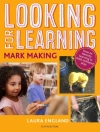This second edition of Project-Based Learning (PBL) presents an original approach to Science, Technology, Engineering and Mathematics (STEM) centric PBL. We define PBL as an “ill-defined task with a well-defined outcome, ” which is consistent with our engineering design philosophy and the accountability highlighted in a standards-based environment. This model emphasizes a backward design that is initiated by well-defined outcomes, tied to local, state, or national standard that provide teachers with a framework guiding students’ design, solving, or completion of ill-defined tasks. This book was designed for middle and secondary teachers who want to improve engagement and provide contextualized learning for their students. However, the nature and scope of the content covered in the 14 chapters are appropriate for preservice teachers as well as for advanced graduate method courses. New to this edition is revised and expanded coverage of STEM PBL, including implementing STEM PBL with English Language Learners and the use of technology in PBL. The book also includes many new teacher-friendly forms, such as advanced organizers, team contracts for STEM PBL, and rubrics for assessing PBL in a larger format.
Mục lục
Preface; Chapter 1 Why PBL? Why STEM? Why Now? An Introduction to STEM Project-Based Learning: An Integrated Science, Technology, Engineering, and Mathematics Approach; Chapter 2 From the Project Method to STEM Project-Based Learning: The Historical Context; Chapter 3 Theoretical Framework for the Design of STEM Project-Based Learning; Chapter 4 Engineering Better Projects; Chapter 5 W3 of STEM Project-Based Learning; Chapter 6 Interdisciplinary STEM Project-Based Learning; Chapter 7 STEM Project-Based Learning: Specialized Form of Inquiry-Based Learning; Chapter 8 Technology in STEM Project-Based Learning; Chapter 9 Affordances of Virtual Worlds to Support STEM Project-Based Learning; Chapter 10 STEM Project-Based Learning and Teaching for Exceptional and Learners; Chapter 11 Classroom Management Considerations: Implementing STEM Project-Based Learning; Chapter 12 Changing Views on Assessment for STEM Project-Based Learning; Chapter 13 English Language Learners and Project-Based Learning; Chapter 14 Project-Based Learning: An Interdisciplinary Approach for Integrating Social Studies with STEM; Appendix A. Non-Newtonian Fluid Mechanics STEM PBL; Appendix B. Ideation Rubric; Appendix C. Oral Presentation Rubric; Appendix D. Presentation Rubric PT1 Individual; Appendix E. Presentation Rubric PT2 Group; Appendix F. STEM Project-Based Learning Storyboarding Guidelines; Appendix G. Crossing the Abyss: Popsicle Stick Bridge: WDO/IDT; Appendix H. Establishing Cooperative Group Behaviors and Norms for STEM PBL; Appendix I. Building High Quality Teams; Appendix J. Personal Responsibility and Time Management Report; Appendix K. Accountability Record; Appendix L. Peer Evaluation Handout; Appendix M. Leadership/Effort Bonus Worksheet; Appendix N. Simple Group Contract: Our Contract; Appendix O. Sample Group Contract; Appendix P. Team Contract; Appendix Q. Self Reflections; Appendix R. Reflection on Team Collaboration; Appendix S. Teacher Peer Evaluation of STEM PBL Project; Appendix T. Project-Based Learning Observation Record; Appendix U. Project Development Rubric; Appendix V. Who Killed Bob Krusty?: A Dynamic Problem-Solving Event; Appendix W. PBL Refresher: Quick Quiz – Project-Based Learning; Appendix X. Teacher Project-Based Learning Checklist; Appendix Y. Standards Based Projects; Appendix Z. Rubric for Well-Defined Outcome and Ill-Defined Task (WDO-IDT).












